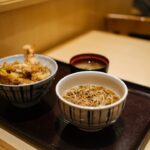Are you ready to step off the beaten path and immerse yourself in Japan’s most enchanting hidden hot springs? Away from the crowds and glossy tourist brochures, discover a world where nature, tradition, and true hospitality come together. In this guide, we uncover deeply local onsen retreats, share real travelers’ stories, offer essential etiquette tips, and spotlight emerging sustainable sanctuaries. You’ll see why soaking like a local is an unforgettable, soulful journey. Let the adventure begin!
The Secret of “Hitou”: Why Locals Treasure Hidden Onsen
In Japan, onsen bathing is far more than just a luxurious soak—it’s an essential part of life and a soul-soothing tradition. But among thousands of hot spring resorts, there lie “hitou” (秘湯): secret or forgotten baths, cherished by locals for centuries yet rarely featured in mainstream guides. These secluded springs, perched in mountain hamlets or forest clearings, offer a raw, elemental atmosphere, often with mineral-rich waters and rustic aesthetics. What sets hidden onsens apart is their authenticity: timber buildings, open-air “rotenburo” edged by ancient pines, and the gentle sounds of nature, all far from the hustle of urban tourism. Locals come here not just to relax, but to reconnect with their roots and each other.
Four Extraordinary Secret Onsen: From Kusatsu to Kurokawa
Japan’s countryside is dotted with legendary secret onsens, each boasting unique spring water qualities and stunning scenery. Let’s step into some of the most beloved hideaways:
- Kusatsu Onsen (群馬県): While the central town is famous, venture uphill to remote baths like Sainokawara Rotenburo, where steaming pools merge with volcanic landscapes, and autumn leaves ignite the mountainside with crimson and gold.
- Nyuto Onsen (秋田県): Tucked into the deep woods of northern Honshu, this historic area is famed for Tsurunoyu, a centuries-old bathhouse with milky, healing spring water and rustic thatched lodges.
- Takayu Onsen (福島県): Located on the slopes of the Azuma mountains, this retreat is cherished for its sulphur-rich blue waters. Imagine soaking as snowflakes drift quietly over steaming pools in winter.
- Kurokawa Onsen (熊本県): Southern Japan’s most atmospheric onsen town is a network of riverside baths and wooden inns under ancient trees. Each ryokan offers its signature spring, encouraging “onsen hopping” with a local pass.
Each of these spots is a destination unto itself—inviting you to discover flavors, traditions, and scenery you won’t find in the guidebooks.
Real Onsen Experiences: Heartfelt Encounters, Breathtaking Views, and Local Cuisine
Hidden onsen trips often lead to remarkable memories and heartfelt connections. At Nyuto Onsen, you might share a steaming outdoor bath with local grandmothers who recount folk stories passed down generations. In Takayu, wake up before dawn for a snowy sunrise soak—with only silent mountains and mist for company.
After your bath, savor “onsen ryori”—regional cuisine crafted with local, seasonal ingredients. From wild trout grilled on open hearths in Akita, to earthy mountain vegetables and creamy “onsen tofu” in Kumamoto, every meal is a celebration of place. The warmth of local innkeepers extends beyond polite service; guests are welcome like family, often invited to join moon-viewing gatherings or rural harvest festivals.
How to Enjoy Secret Onsen: Essential Etiquette and Relaxation Tips
To feel truly at home at a secret onsen, understanding a few cultural nuances is vital. Always wash your body thoroughly before entering the communal bath; this keeps the mineral-rich water clean for all. Swimwear is not allowed—relax and embrace the tradition of nudity, as everyone else does. Keep towels out of the water and speak in gentle voices; onsen are a place for quiet reflection.
For maximum enjoyment, try donning a yukata (light cotton kimono) provided by your inn and strolling through town in wooden “geta” sandals. Don’t hesitate to strike up conversations with locals—they’ll usually share tips on the best hours to visit each bath or recommend their favorite seasonal snacks.
The Future of Hidden Onsens: Sustainability and Emerging Retreats
As rural regions seek to revitalize local communities, a new generation of onsen is gaining attention. These eco-friendly lodges blend ancient wisdom with modern comforts: harnessing geothermal energy, recycling spring water, and using local timber for minimalist architecture. In places like Nagano and Shikoku, newly restored baths are attracting adventurous travelers keen on reducing their carbon footprint.
Sustainable travel is merging seamlessly with timeless hospitality, ensuring that Japan’s hidden hot springs remain soulful sanctuaries for generations to come. If you’re searching for authentic immersion and deep rejuvenation, let these secret onsens be your next voyage.







